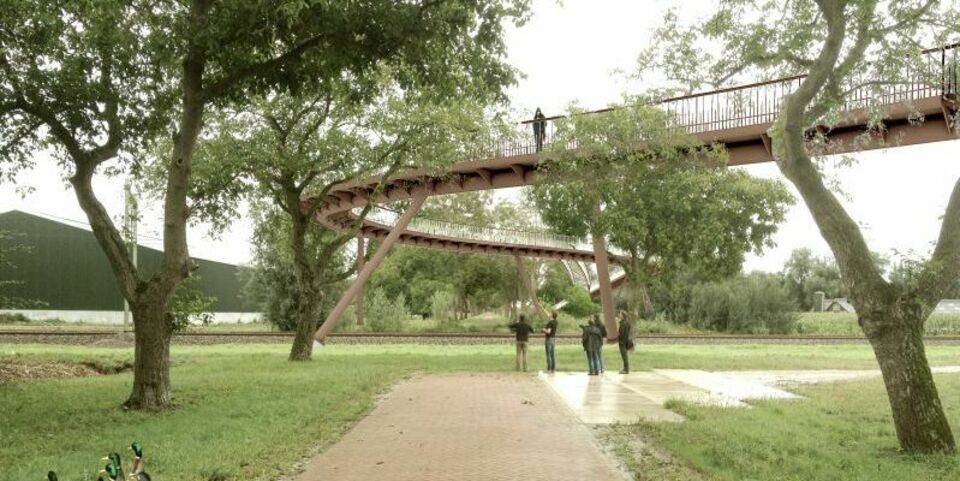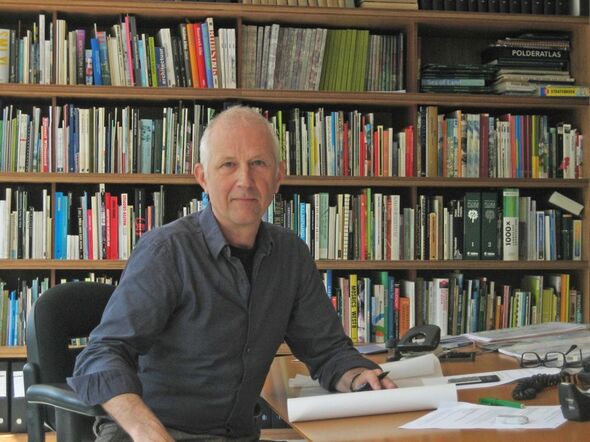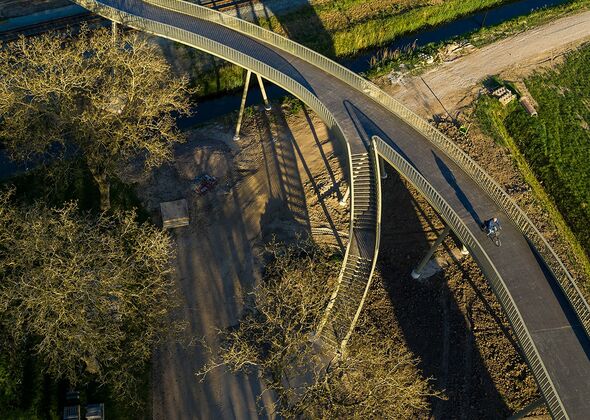What will the campus look like in twenty years?
The TU/e campus will be the site of several major construction projects during the next few years, including two new residential towers with maisonettes in between, which will yield seven hundred extra rental units. The locations next to De Zaale and around the Laplace square will be turned into areas where staff and students can practice sports and meet each other. Cars will be relocated once and for all to parking garages on the edges of the terrain, and bicycles will be stalled in semi-underground storage facilities. And a potential bridge for cyclists and pedestrians will connect the terrain to the Karpendonkse Plas.
Landscape architect Paul Achterberg believes that all extra buildings and further changes to the terrain should have as little impact on the natural beauty of the TU/e campus grounds as possible. He was also involved with TU/e’s landscape vision of ten years ago, which outlined the plans up and until 2020. The new vision, towards 2040, was discussed during the University Council last Monday. The sketches and plans immediately show that the campus will become the site of several major construction projects in the coming years. This could also be deduced from the Masterplan Campus 2040 in May. The new landscape vision is in line with this plan.
Achterberg refers to the campus as “a unique area,” especially since it’s located so close to the city center. He is not afraid to draw a comparison between the TU/e campus and Oxford and Cambridge. “Where else in the Netherlands can you find a campus this close to the city with so much greenery, and with such a fantastic small river like the Dommel? TU/e has struck gold with that, and it should stay that way.”
Residential towers
Construction work will commence in the north-east corner of the terrain. If it’s up to the Executive Board, the first new residential tower with rental units for students, to be located at the site where the Paviljoen is currently being dismantled, will open its doors in 2023. Achterberg, who was involved in this project as well, says that the procurement process took place some two weeks ago. That’s all he can say about it for now. A second tower will be built as well in time, with a small student village consisting of maisonettes in between both towers. Together, this will result in seven hundred extra living units, as was requested from the university by the Eindhoven municipal council.
Achterberg says that as a compensation, the strip of forest north of the Paviljoen will be expanded. That same corner of the terrain will also become the site of several new water features: two large ponds, one of which will be located diagonally across the DIFFER building, and a long water course. Achterberg: “These were designed in order to successfully cope with all the water from short but heavy rain showers, which occur more frequently.” He also looked into ways to accommodate the bats currently residing in the Paviljoen. “We will build a five-meter-high brick tower with entry holes. They can stay there during the day and also hibernate there.”
De Zaale
A second area will be developed north of the Green Strip. Here, staff and students will be able to meet each other and practice sports together. This second axis runs along De Zaale, from Atlas to the Laplace square. Within six years or so, the second entrance of Gemini, where Mechanical Engineering and Biomedical Engineering are located, will be created, near the Laplace square. Renovation of that enormous building will commence next year and will take at least five years.
Achterberg says that cars will disappear completely from this core area, and that five semi-underground bicycle storage facilities are to be realized there for students and staff members of Gemini and the Laplace building. “It’s important to make clear choices, especially with regard to car traffic, which will increase significantly with the presence of more residents on the campus in the future,” he says. “Because you can’t combine greenery, meeting areas and parking spaces at one location.” The designated areas for the semi-underground car parking garages lie at the edges of the terrain, including at those spots where the tennis courts and hockey fields are currently located. The University Council asked some questions about this on Monday, but Achterberg says that it’s not difficult to install rooftop sports fields on parking garages. “The Onze Lieve Vrouwestraat would be an alternative if that won’t work, or the Hondsheuvels, where it’s also possible to create more sports accommodations.”
Pedestrian and cycle bridge
One of the most eye-catching projects is planned a bit further down the road, where the Onze Lieve Vrouwestraat changes into the Insulindelaan. Here, a several meters high pedestrian and bicycle bridge, which connects the TU/e terrain to the regional network of bicycle paths, is to be realized. Achterberg doesn’t want to waste too many words on the tunnel for cyclists under the Onze Lieve Vrouwestraat, which took so much effort to get realized. “Unattractive, unsafe and not really properly connected to the regional bicycle path network,” he says. He can’t say at this point whether or not that pedestrian and bicycle bridge will actually be realized. “But if no one puts it forward as a potential project, you can be sure that it will never be discussed and that it will never happen. What will happen, if I have anything to say about it, is a substantial expansion of the pedestrian and bicycle paths along the Dommel and on the entire campus grounds.”
Junction XL
One unresolved problem concerns the still far from optimal reachability of Eindhoven Central Station from the southwest corner of the campus. It is the municipality’s ambition to become an international transit hub – International Junction XL – and for that purpose, the northside of the station area needs to be further developed. The city plans to build 10,000 new homes – including apartments in the BunkerToren – and greening of that area, particularly around the Dommel, needs to connect the campus directly to the station. Achterberg doesn’t know the current status of these plans. “This is a comprehensive and ambitious project for the municipality, and the university needs to wait and see how it will develop. But naturally, both parties discuss the matter on a regular basis.”




Discussion